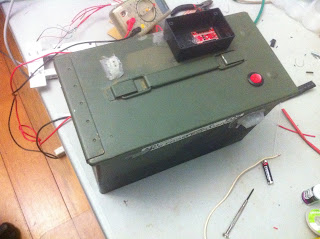Also I have started thinking about the startup sequence, which felt odd at first because for the most part there has been little theory and a lot of time consuming fabrication. I plan on using a pyrotechnic igniter because its simple, reliable and I believe will limit the possibility of unburnt propellant collecting and causing a hard start. I have two ideas for igniters, a thermite based igniter and one based on a cylindrical strand of solid propellant. The thermite based one has the advantage that it is more energetic and will throw sparks increasing the chance of ignition. The solid propellant one although not as energetic and having a smaller burning area will increase the chamber pressure to (if sized correctly) operating pressure. I am worried that because of the large initial pressure differential and the inability of positing the valves with precision that the starting propellant flow will be too large. Pressurising the chamber will reduce the chance of a large volume of propellant entering the chamber causing a hard start. The igniter will need to burn for at least 5 seconds, but the longer the better. The other advantage of thermite is that its burn rate not really sensitive to pressure, whereas too much solid propellant could in itself cause a hard start.
After the igniter has started burning and visual confirmation of the burning has been acknowleged I will open the fuel and oxidiser valves to 1/10th or thereabouts. Form what i have read its better to have a fuel rich flame so the fuel valve will be open more than the oxidiser one. Once I have visual confirmation of the propellant burning I will open the valves to full. Once the chamber pressure is right it shouldn't really matter how open the valves are. I am still not really sure I understand why the chamber pressure settles to a particular value, dependant on the feed pressure (as the flow through the injectors isn't choked) . Thats something I would like to understand better. Whenever I try to think about it I go in circles because the chamber pressure is dependant of the mass flow which is dependant on the chamber pressure. I understand that with a fixed exit area the pressure will reach an equilibrium but how would you possibly calculate that? More reading required.....


































